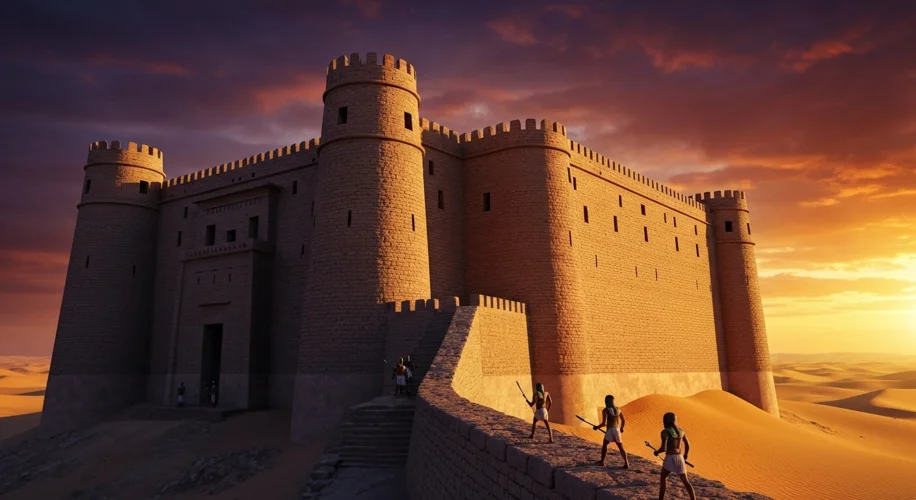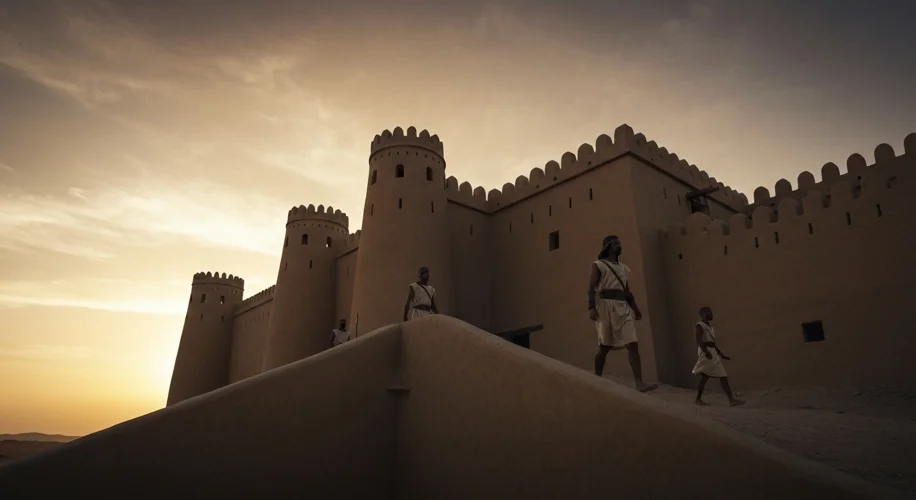When we think of ancient Egypt, images of towering pyramids and sprawling temples often come to mind. These magnificent structures speak of a civilization deeply connected to the divine and the afterlife. Yet, beneath the grandeur of religious monuments lay a more pragmatic, and equally awe-inspiring, aspect of Egyptian engineering: their military architecture. From the arid deserts to the fertile Nile Delta, Egypt’s fortresses stood as silent sentinels, safeguarding its vast empire and its people.
Imagine the year 1450 BCE. The New Kingdom is at its zenith, its pharaohs commanding vast territories. But this power is not without its challenges. Threats lurk beyond Egypt’s borders – Nubian kingdoms to the south, Hittite empires to the north, and nomadic raiders across the sands. To maintain control and project power, Egypt needed formidable defenses.

These weren’t just piles of rubble; Egyptian military architecture was a testament to sophisticated planning and execution. The primary material was often mudbrick, readily available and easy to work with. But don’t let the humble material fool you. These bricks were laid with incredible precision, often bonded with thick layers of mortar. The walls of fortresses like Buhen, a sprawling complex on the southern frontier dating back to the Middle Kingdom (around 2500 BCE), were up to 10 meters thick at their base, tapering as they rose. This massive construction was not only to withstand direct assault but also to prevent siege engines from breaching the defenses.
Defensive strategy was paramount. Egyptian fortresses weren’t simply walls; they were intricate systems designed to channel attackers into kill zones. Buhen, for instance, featured a double line of fortifications. The outer wall was supplemented by a ditch, and attackers had to cross a causeway exposed to archery fire from the inner wall’s battlements. The inner fortress itself was a maze of ramps, staircases, and courtyards, designed to confuse and disorient any enemy that managed to breach the outer defenses. Guards could then pick off intruders from a series of elevated positions.
Consider the sheer ingenuity. The Hittites, Egypt’s great rivals in the Levant, employed similar defensive principles, but the Egyptians had a particular knack for adapting their designs to the local environment. In arid regions, water was a precious commodity, and fortresses often incorporated deep wells or cisterns to ensure a sustained supply during a siege. Watchtowers, strategically placed along the walls, provided excellent vantage points for spotting approaching enemies from miles away. Crenellations, the notched parapets along the top of the walls, offered archers and soldiers cover while allowing them to fire upon the attackers.
One of the most remarkable aspects of Egyptian military architecture was its permanence. While many nomadic societies relied on temporary camps, Egypt built structures designed to last millennia. The fortresses along the Nubian frontier, though often in ruins today, still speak volumes of Egypt’s ambition to control trade routes and resources. These were not just defensive outposts but centers of administration, military garrisons, and sometimes even small towns, projecting Egyptian influence deep into foreign lands.
Key actors in this architectural drama were not just the pharaohs, but the architects, engineers, and the vast labor force, often composed of soldiers and conscripts. Their understanding of geometry, logistics, and materials allowed them to construct these formidable structures. The perspective from the defending soldier, peering through a narrow arrow slit, or the attacking chieftain, surveying an imposing wall, would have been vastly different, yet the common goal of survival and dominance shaped these designs.
The impact of these fortresses was profound. They allowed Egypt to maintain its borders for centuries, facilitating trade, securing vital resources like gold and precious stones from Nubia, and projecting an image of invincibility. They were instruments of imperial control, demonstrating that Egypt’s power extended far beyond the Nile Valley.
In conclusion, ancient Egyptian military architecture, though often overshadowed by its religious counterparts, was a critical component of the civilization’s success. These enduring stone sentinels, built with remarkable engineering skill, not only protected Egypt but also symbolized its power and influence, leaving an indelible mark on the landscape and the annals of history. They are a testament to an often-overlooked facet of Egyptian ingenuity, where practicality met a grand vision of empire.

